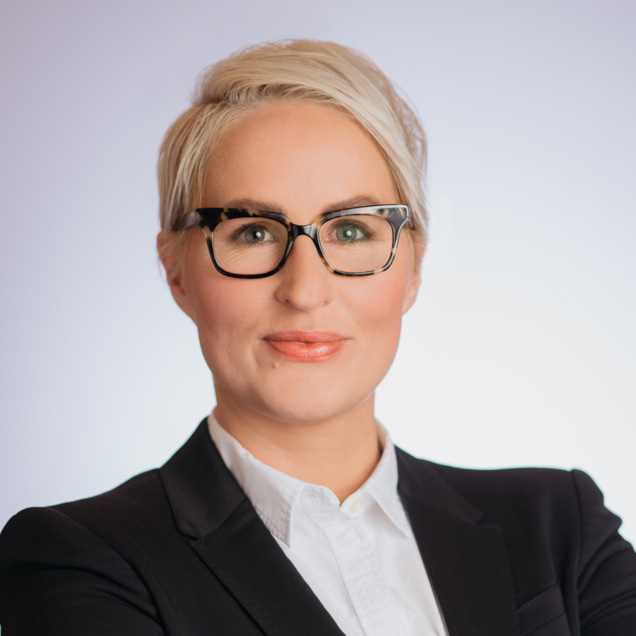Higher ed innovator on the post-corona landscape

Dr. Bridget Burns has spent the past two decades helping represent, coordinate, and advocate on behalf of more than 30 university presidents and chancellors around the country. She spent the past six years building and leading the work of the University Innovation Alliance (UIA), the first national consortium of universities collaborating to close achievement gaps through innovation, scale and diffusion.
Named one of the “16 Most Innovative People in Higher Education” by Washington Monthly magazine, Burns supports the UIA campuses collaborative work, which has already resulted in 32% more low-income graduates and 56% more graduates of color. She has shared their stories in various national publications, including 60 Minutes as well as in the documentary “Unlikely.” Burns received her Doctorate of Education from Vanderbilt University in Higher Education, Leadership and Policy.
We sat down with Burns to get her insights on the future of higher education.
Can you share your hypothesis of what is on the horizon for the higher education landscape?
For far too long, universities have often been tinkering alone in the dark to uncover effective solutions for student success. I think the pandemic has created a moment where institutions are more comfortable asking for advice from peers, and have a hunger to collaborate in order to best support their students and students across the country. I suspect we’ll see far more collaboration within universities, but also across different institutions, and we will likely see far more shared services approaches to emerging challenges.
There needs to be significantly less emphasis on competition and rankings, and more support to help campuses partner to solve collective challenges. Most of the challenges in our sector are shared ones. By isolating institutions and obsessing about their uniqueness, we discourage them from teaming up to leverage the collective wisdom of the field and address long-standing problems.
What do you believe is one thing universities must learn to deal with in the post-pandemic world?
I think COVID has reinforced the urgency for redesigning our systems and practices around the students of today. Our higher education systems were not built on the commitment to ensure that any student admitted to their campus has the support to be successful. I’ve been really inspired by how UIA campuses have moved mountains to ensure students have a safe place to learn and live, have WiFi and access to digital materials, can still eat and pay their bills. The challenges facing today’s students are large and complex, but I think it’s a moment for higher ed to take responsibility for reinventing itself in a way that is student-first.
I also think any trepidation about leveraging data through predictive analytics needs to fall by the wayside. We can no longer expect students to walk through our doors or raise their hands when they have problems. Campuses need to ensure their data systems are leveraging past experiences to identify potential obstacles before a student encounters them, equipping us to intervene and provide the resources and support they need before they ask.
The challenges facing today’s students are large and complex, but I think it’s a moment for higher ed to take responsibility for reinventing itself in a way that is student-first.
How is the UIA supporting universities through this and what will be your team’s focus going forward?
The UIA continues to be a hub for collaboration and scale. We’re surfacing successful practices on campuses and sharing with the rest. Our processes for doing so have always been virtual for the past six years, so in this moment, it’s been second nature to continue helping campuses accelerate practices and innovations that support student success.
One practical example has been the use of emergency aid as students suddenly had to scramble to go back home or find a place to live, or access WiFi or a laptop, or find food outside of the dining halls. All 11 campuses, thanks to our work together, already had emergency aid funds set up to give students “micro grants” to ensure they don’t get off track due to small debts. So, in the midst of the pandemic, we were able to raise several hundreds of thousands of dollars and rapidly deploy those to students across the 11 institutions.
If higher ed is ripe for innovation, what changes need to be made?
I expect we’ll see dramatic improvement in the quality of online learning across the board, and I am also excited about the evolution of the institution-vendor relationship. Too often, it’s been so transactional—which is of no benefit to either side. I’ve observed that institutions and technologists are coming to the table to really collaborate—this spring, in a moment of crisis, but also now in a period of thoughtful design and planning for the known unknowns. Technology firms are getting real, productive feedback from faculty and students, and everyone is motivated to finally improve the digital learning experience. I think that sets us up for success.
Amidst all the confusion, what advice can you share with higher ed marketers?
Be a true partner. For those working in marketing on the product or services side, this is a time to step up and support your current higher education customers. Higher ed institutions are working tirelessly right now to manage the unknown for students, faculty and staff, while also preparing for the year ahead. This isn’t the time to try to sell, but rather to support. To listen. To help troubleshoot and problem solve. When you or your team do find real solutions, present them in a clear and straightforward way. Institutions are having to cut through a lot of noise right now to find the support they need. Honest marketing will go a long way in building trust, and helping surface the solutions to real challenges.